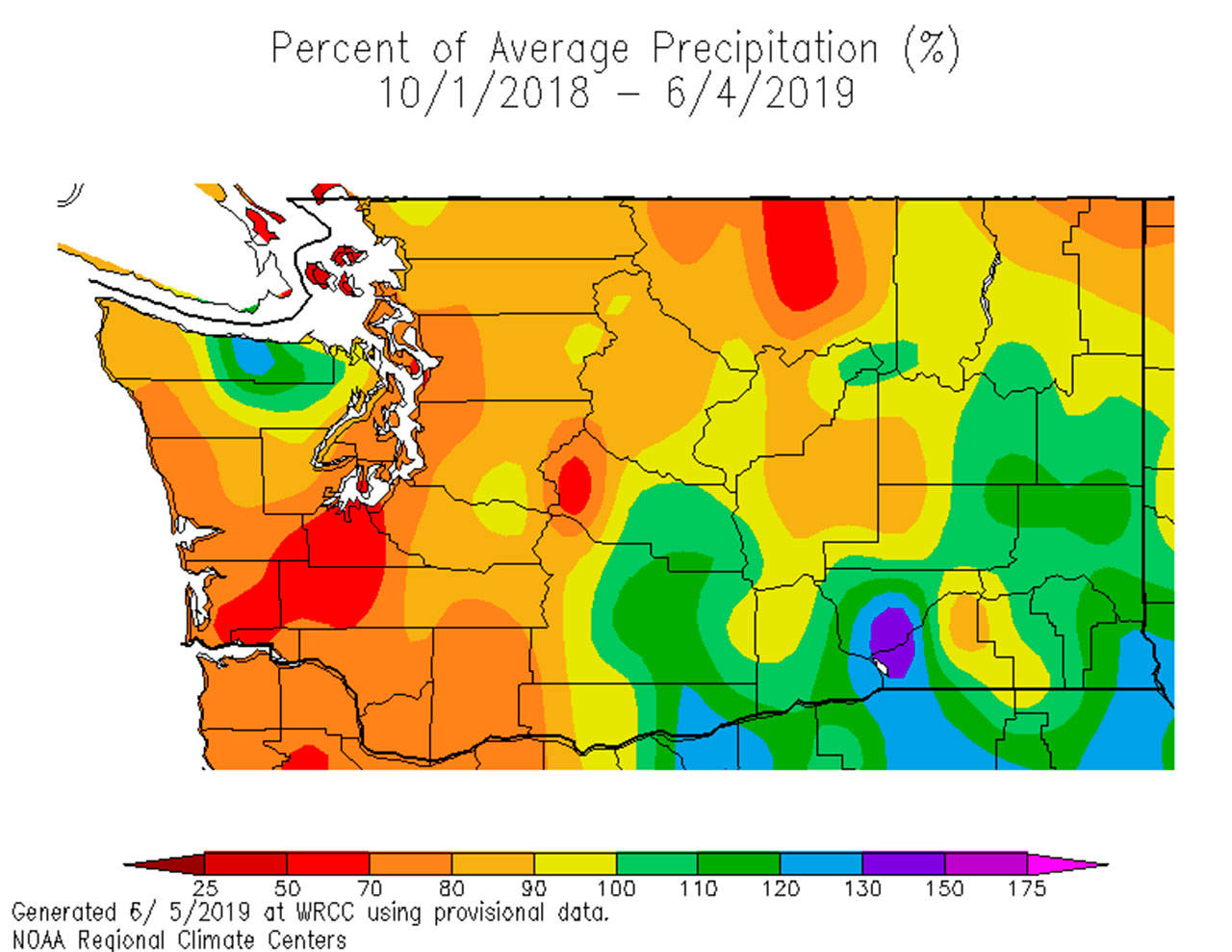The North Olympic Peninsula is in a severe drought, the state Department of Ecology said, a statement disputed by a Northwest weather expert.
The U.S. Drought Monitor has changed its classification for the Olympic Peninsula from a “moderate” to “severe” drought, according to a Thursday announcement.
“The current drought outlook for the Olympic Peninsula just took another step in the wrong direction,” Ecology officials said.
“According to the USDM, a severe drought classification can bring potential impacts of likely crop and pasture damage, water shortages and water restrictions.”
Cliff Mass, University of Washington atmospheric sciences professor, said a dry summer can be expected but that the term “severe drought” is “much too strong.”
“Municipal systems are fine,” Mass said in a Friday email.
“And substantial precipitation is now falling. If this is a severe drought, what will they say when they really have a problem?”
Central and eastern Clallam County have had above-normal precipitation since Oct. 1, while most of the West End and all of East Jefferson County were above 80 percent of normal or better, according to a precipitation map from NOAA’s Regional Climate Centers.
Olympic Mountain snowpack was 75 percent of normal April 1, a date widely used to measure the snow water equivalent at the peak of the season, according to the U.S. Department of Agriculture’s Natural Resources Conservation Service.
In his weather and climate blog, Mass took issue with Gov. Jay Inslee’s May 20 declaration of a “drought emergency” for a large swath of the state, including the North Olympic Peninsula.
He argued in a May 30 post at www.cliffmass.blogspot.com that there was a “substantial subjective element” to the state’s definition of drought.
State law defines drought as a 75 percent or lower water supply and a water shortage that is “likely to create undue hardships.”
“My take on all this, is that our state is going into the summer in relatively good shape water-wise and that there is no reason to expect drier than normal conditions and excessive wildfires,” Mass wrote May 23.
“Summers are typically dry here and there will be fires, but it is important not to exaggerate or hype the situation.
“If one cries wolf too many times, one day folks may not listen.”
Ecology on Tuesday began accepting grant applications from public agencies experiencing hardships related to drought.
The Legislature appropriated $2 million to Ecology for drought response in 2019.
Grants can be used for such projects as drilling emergency wells and helping fish hatcheries maintain cool and clean water.
“This funding is meant to help our communities be more resilient,” said Mary Verner, Ecology’s water resources program manager, said in a Tuesday press release.
“Conditions are expected to worsen over the summer and we want to be able to act quickly if needed.”
The drought emergency declaration, which now includes 27 watersheds, allows Ecology to expedite emergency water right permitting and to make funding available to address hardships caused by drought conditions.
“We’re coming out of a mediocre snowpack winter with lower-than-normal precipitation,” said Jeff Marti, Ecology’s drought coordinator.
“Additionally, we’re seeing some of the driest conditions on record in the northwest part of the state, while locations in the southeast have experienced recent flood watches.”
After Inslee declared the drought emergency in May, the Clallam County Public Utility District issued Stage 2 voluntary water conservation alerts for the Clallam Bay/Sekiu, Upper Fairview and Island View water systems.
Customers in those districts were encouraged to reduce outdoor water use, fix leaky faucets and to take shorter showers, among other conservation measures.
“The objective of the Stage 2 plan is to encourage customers to conserve and prepare customers for a possible increase in drought response later in the season,” PUD officials said.
Ecology officials said March was the fourth-driest on record for the state.
“Total precipitation on the western Olympic Peninsula from January through May was the third driest since 1895,” Ecology officials said.
“Even after a memorable bout of snow in February across much of Western Washington, we just didn’t have the snowpack or spring weather necessary for healthy water supplies.”
The state Department of Natural Resources said fire danger was low in Western Washington and moderate in Eastern Washington as of Friday.
________
Reporter Rob Ollikainen can be reached at 360-452-2345, ext. 56450, or at rollikainen@peninsuladailynews.com.

